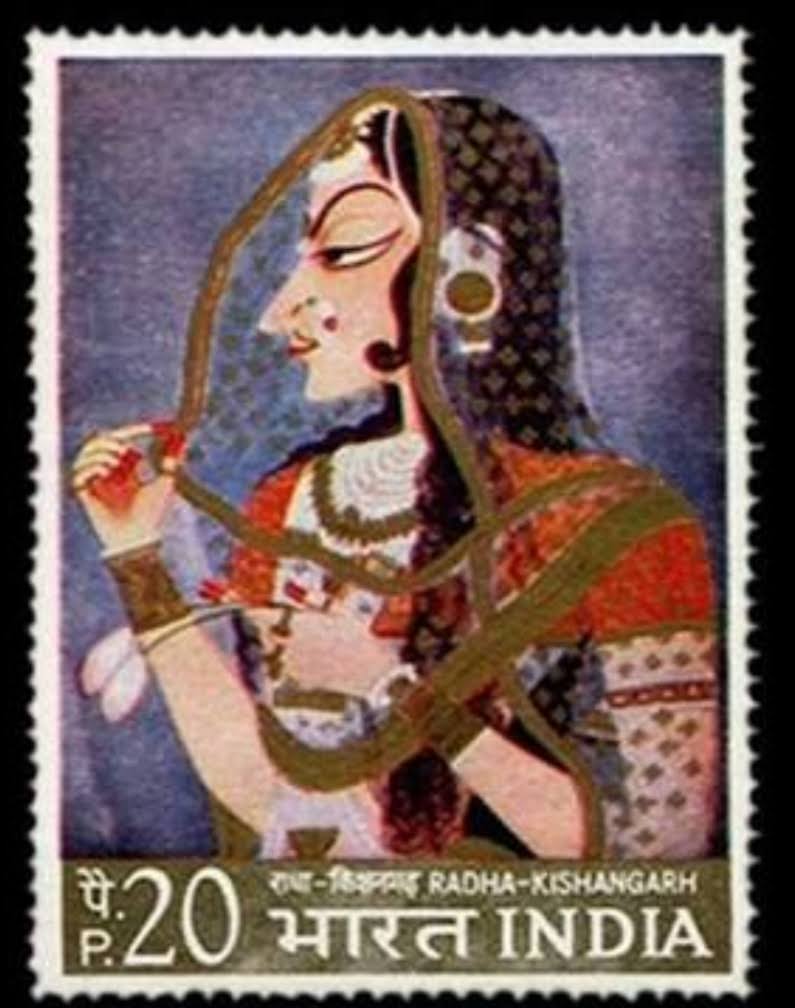We've all seen the pretty lady in many Rajasthani miniature paintings, and some of us even know she's called "Bani Thani", but few know who she is and why she's been painted or the fascinating history behind this form of Kishangarh paintings. Read on to find out.

As mentioned in our previous post on Miniature paintings, like many other arts it was brought to India by the Mughals. In 1555 Humayun, returning from exile in Persia, brought painters along with him. His son, Akbar, established an atelier where serious work of painting began. Hindus joined in, bringing their own style - the particular Rajasthani Miniature which came into being after the sixteenth century. While in most of the Rajasthani states, painting had come to a close by the end of the eighteenth century, a new school of painting emerged in the small state of Kishangarh.
Its ruler Raja Sawant Singh (1748-1757) was well versed in Sanskrit, Persian and Marwari languages, and had also studied music and painting. He played an important role in the establishment of the Kishangarh form and school of Miniature art and in creation of Kishangarh masterpieces. Raja Sawant Singh fell in love with a courtesan who was a singer and poetess. Her name was Vishnupriya originally but since she was elegantly dressed and remained decorated and well behaved at all times, she was known as Bani Thani. The court artist at that time Nihal Chand went on to create many Kishangarh masterpieces. But the famous ones remain those painted around the Kishangarh nayika who had a narrow high crowned head, arching eyebrows, elongated nose and most evocatively large curvaceous eyes which went all the way to the ear, well dressed with glittering jewelry and a nathani on her nose. This became the signature of Nihal Chand and got associated with Bani Thani very soon given the resemblance.
These paintings soon started being made by others and is always in profile and the eye half closed. India issued a commemorative stamp in 1973 honoring this beautiful Kishangarh painting having a face value of 20 paise.
Hope you enjoyed reading this short snippet of the history of our Art. We have artists from Kishangarh itself who produce these beautiful Bani Thani paintings to date. Do get in touch with us to own your own slice of history and display it proudly at home.
Below are two paintings produced by our very own artists of Kishangarh.




1 comment
How much would this postage stamp cost today and are they available now?